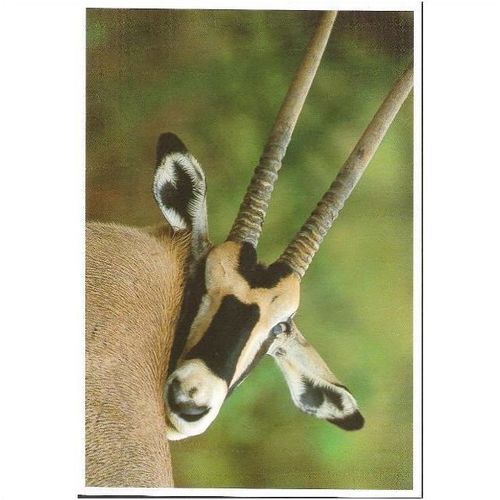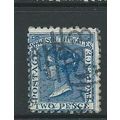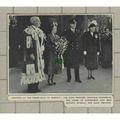Animal - Gemsbok, African antelope, Kenya - postcard 1998
- Condition : Used
- Dispatch : 2 Days
- Brand : None
- ID# : 122803423
- Quantity : 1 item
- Views : 626
- Location : United Kingdom

- Seller : justthebook (+1699)
- Barcode : None
- Start : Wed 04 Dec 2013 05:56:44 (EDT)
- Close : Run Until Sold
- Remain : Run Until Sold
Checks/Cheques
 for 1 item(s) edit
for 1 item(s) edit
Shipping Calculator
More Listings from This Seller view all
Seller's Description
- Postcard
- Picture / Image: Gemsbok scratching by Mary Ann McDonald
- Publisher: BBC Wildlife Magazine / Natural History Museum, London
- Postally used: no
- Stamp: n/a
- Postmark(s): n/a
- Sent to: n/a
- Notes / condition:
Please ask if you need any other information and I will do the best I can to answer.
Image may be low res for illustrative purposes - if you need a higher definition image then please contact me and I may be able to send one.
------------------------------------------------
Postage & Packing:
UK (incl. IOM, CI & BFPO): 99p
Europe: £1.60
Rest of world (inc. USA etc): £2.75
No additional charges for more than one postcard. You can buy as many postcards from me as you like and you will just pay the fee above once. (If buying postcards with other things such as books, please contact or wait for invoice before paying).
Payment Methods:
UK - PayPal, Cheque (from UK bank) or postal order
Outside UK: PayPal ONLY (unless otherwise stated) please. NO non-UK currency checks or money orders (sorry).
NOTE: All postcards are sent in brand new stiffened envelopes which I have bought for the task. These are specially made to protect postcards and you may be able to re-use them. In addition there are other costs to sending so the above charge is not just for the stamp!
I will give a full refund if you are not fully satisfied with the postcard.
----------------------------------------------
Text from the free encyclopedia WIKIPEDIA may appear below to give a little background information (internal links may not work) :
*************
The gemsbok or gemsbuck (Oryx gazella) is a large antelope in the Oryx genus. It is native to the arid regions of Southern Africa, such as the Kalahari Desert. Some authorities formerly included the East African oryx as a subspecies. The current gemsbok population in South Africa is estimated at 373,000 specimens.[2]
The name ""gemsbok"" in English is derived from Afrikaans gemsbok, which itself is derived from the Dutch name of the male chamois, gemsbok. Although some superficial similarities in appearance (especially in the facial pattern) are noticed, the chamois and the oryx are not closely related. The usual pronunciation in English is /'g?mzb?k/.[3]
Gemsbok are light brownish-grey to tan in colour, with lighter patches toward the bottom rear of the rump. Their tails are long and black in colour. A blackish stripe extends from the chin down the lower edge of the neck, through the juncture of the shoulder and leg along the lower flank of each side to the blackish section of the rear leg. They have muscular necks and shoulders, and their legs have white 'socks' with a black patch on the front of both the front legs, and both genders have long, straight horns. Comparably, the East African oryx lacks a dark patch at the base of the tail, has less black on the legs (none on the hindlegs), and less black on the lower flanks.
Gemsbok are the largest species in the Oryx genus. They stand about 1.2 m (3.9 ft) at the shoulder.[4][5] The body length can vary from 190 to 240 cm (75 to 94 in) and the tail measures 45 to 90 cm (18 to 35 in).[6][7] Male gemsbok can weigh between 220 and 300 kg (490 and 660 lb), while females weigh 100–210 kg (220–460 lb).
Gemsbok are widely hunted for their spectacular horns that average 85 cm (33 in) in length. From a distance, the only outward difference between males and females is their horns, and many hunters mistake females for males each year. In males, these horns are perfectly straight, extending from the base of the skull to a slight outward and rearward angle. Females have longer, thinner horns with a slight outward and rearward curve in addition to their angle.
Female gemsbok use their horns to defend themselves and their offspring from predators, while males primarily use their horns to defend their territories from other males.[8]
Gemsbok are one of the few antelope species where female trophies are sometimes more desirable than male ones. A gemsbok horn can be fashioned into a natural trumpet and, according to some authorities, can be used as a shofar.[9]
Gemsbok live in herds of about 10-40 animals, which consist of a dominant male, a few nondominant males, and females. They are mainly desert-dwelling and do not depend on drinking water to supply their physiological needs. They can reach running speeds of up to 60 km/h (37 mph).
In 1969, the New Mexico State Department of Game and Fish decided to introduce gemsbok to the Tularosa Basin in the United States. The introduction was a compromise between those who wanted to preserve nature and those who wanted to use it for profit and promotion.[10] Ninety-three were released from 1969 to 1977, with the current population estimated to be around 3,000 specimens. They thrived because their natural predators, including the lion, are not present.[11]
type=printed postcards
theme=animals
sub-theme=antelopes
county/ country=kenya
number of items=single
period=1945 - present
postage condition=unposted
Listing Information
| Listing Type | Gallery Listing |
| Listing ID# | 122803423 |
| Start Time | Wed 04 Dec 2013 05:56:44 (EDT) |
| Close Time | Run Until Sold |
| Starting Bid | Fixed Price (no bidding) |
| Item Condition | Used |
| Bids | 0 |
| Views | 626 |
| Dispatch Time | 2 Days |
| Quantity | 1 |
| Location | United Kingdom |
| Auto Extend | No |




















